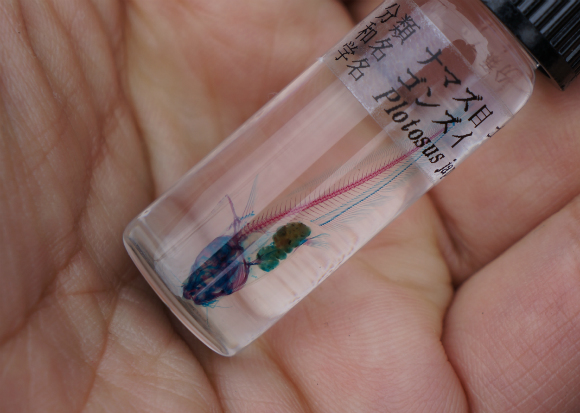
Have you heard of a series of unique creations called “Transparent Specimens” produced by Iori Tomita? It may sound bizarre, but they are specimens of different living creatures including fish, arthropods, reptiles and mammals that have been specially treated to make them transparent. And the end result is far from bizarre – in fact, the specimens are so beautiful that the series of work have a considerable following of fans.
The picture below is a transparent specimen of plotosus – a kind of catfish – which I purchased at a Tokyu Hands store in Tokyo for about 2,900yen (approx. $36). The contrasting blue, purple, red and green colors are breathtaking, and every detail down to each bone can be clearly seen. I have to say that this is the most beautiful scientific specimen I have ever seen.
But how do you make something that looks so unusual and striking? I asked the staff at Tokyu Hands and was able to find out the following:
【How to create a “transparent specimen”】
1. Immerse the fish in formalin and fix the shape of the body.
2. Wash and remove the skin while immersing the fish in distilled water.
3. Immerse the fish in liquid dye to color the bones.
4. Immerse the fish in chemicals to make the body transparent.
Apparently, making a specimen’s body transparent takes much time and effort as well as specialized skills. According to Iori Tomita’s official website, the technique was originally developed to study bone structure by using enzymes to make protein material transparent and then dyeing bone a reddish purple color and cartilege blue, but it takes a long time and considerable skill to create the specimen into a beautiful color and shape. So, the enzymes are really the key to this process.
Well, the specimens certainly offer a glimpse into an unusual and mysterious world. They are beatuiful, but they also seem to remind you of the fragilty of life at the same time.
If you’re in Tokyo area, the specimens are available at the Tokyu Hands store in Shinjuku or Shibuya. They’re sure to make fascinating ornaments!
Pictures and article by: Yoshio
[ Read in Japanese ]

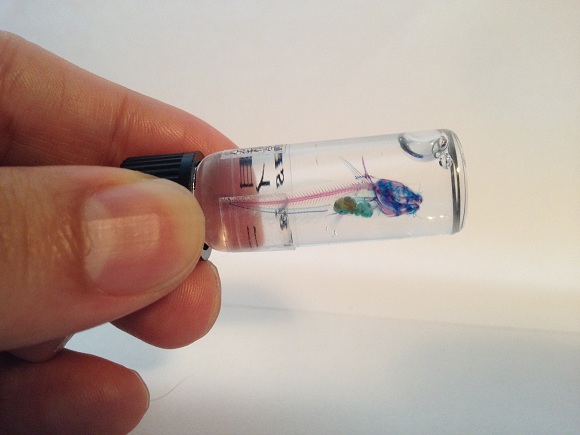
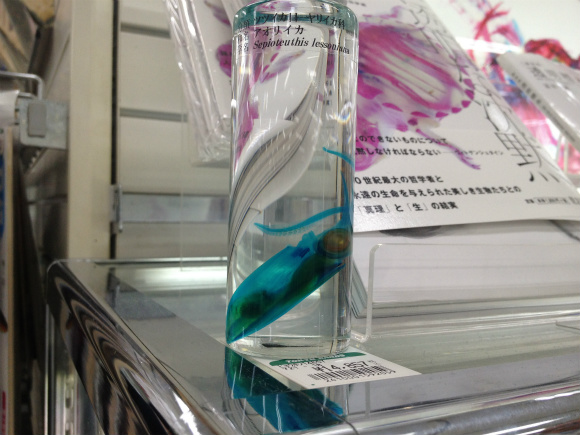
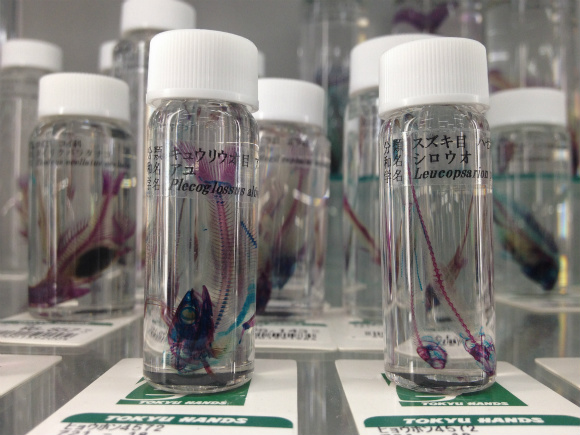
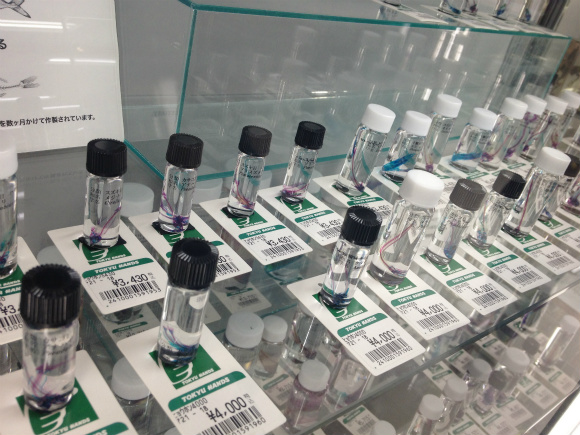
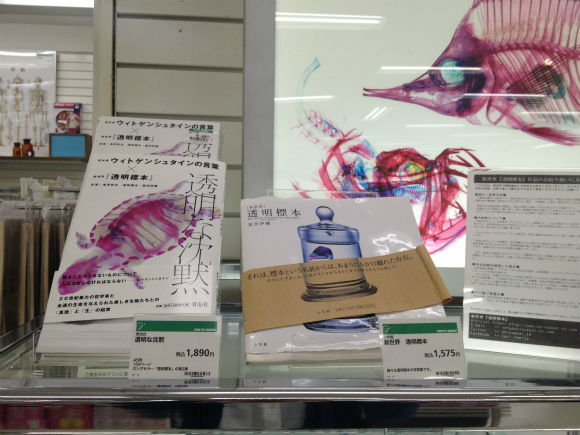
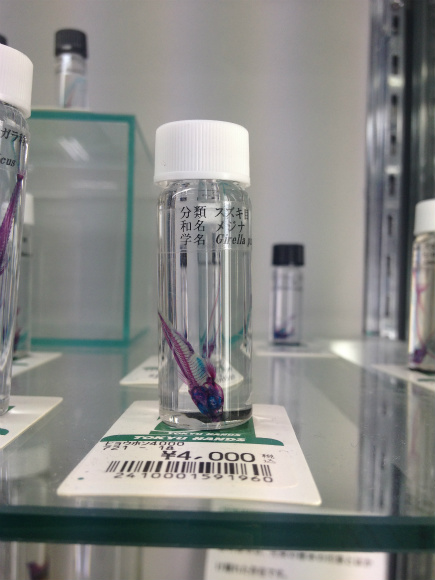
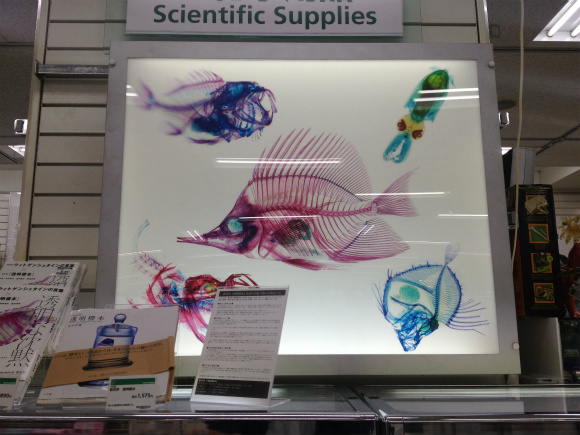
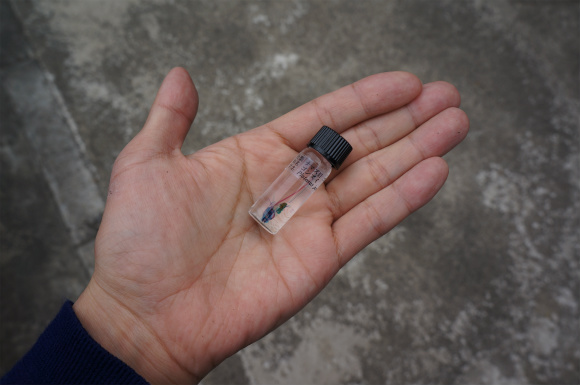
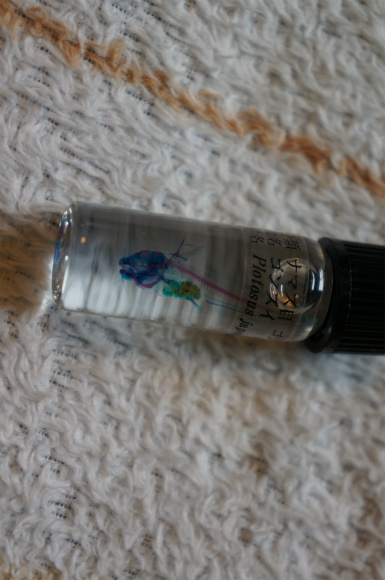
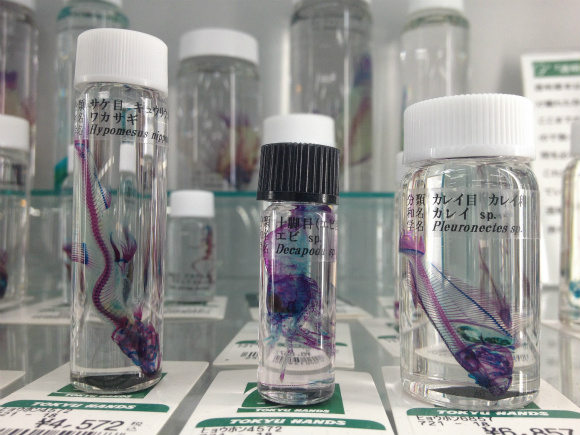
 Japanese museum to hold “wonder” exhibit packed with marvelous curiosities from nature
Japanese museum to hold “wonder” exhibit packed with marvelous curiosities from nature Bird pastries at Tokyo’s Patisserie Swallow Tail are (almost) too cute to eat 【Pics】
Bird pastries at Tokyo’s Patisserie Swallow Tail are (almost) too cute to eat 【Pics】 Eel-flavored catfish available for tasting at Gifu festival
Eel-flavored catfish available for tasting at Gifu festival Tokyu Bus alight button is yours to own, pushing all the right buttons
Tokyu Bus alight button is yours to own, pushing all the right buttons Stunning 4K videos of Dazaifu shrine will make you want a nicer screen and a ticket to Fukuoka
Stunning 4K videos of Dazaifu shrine will make you want a nicer screen and a ticket to Fukuoka Foreigner’s request for help in Tokyo makes us sad for the state of society
Foreigner’s request for help in Tokyo makes us sad for the state of society Red light district sushi restaurant in Tokyo shows us just how wrong we were about it
Red light district sushi restaurant in Tokyo shows us just how wrong we were about it McDonald’s new Happy Meals offer up cute and practical Sanrio lifestyle goods
McDonald’s new Happy Meals offer up cute and practical Sanrio lifestyle goods Hello Kitty isn’t a cat!? We called Sanrio to find out!
Hello Kitty isn’t a cat!? We called Sanrio to find out! New private rooms on Tokaido Shinkansen change the way we travel from Tokyo to Kyoto
New private rooms on Tokaido Shinkansen change the way we travel from Tokyo to Kyoto Historical figures get manga makeovers from artists of Spy x Family, My Hero Academia and more
Historical figures get manga makeovers from artists of Spy x Family, My Hero Academia and more Anime girl English teacher Ellen-sensei becomes VTuber/VVTUber and NFT
Anime girl English teacher Ellen-sensei becomes VTuber/VVTUber and NFT Japan’s massive matcha parfait weighs 6 kilos, contains hidden surprises for anyone who eats it
Japan’s massive matcha parfait weighs 6 kilos, contains hidden surprises for anyone who eats it McDonald’s Japan releases a pancake pie for new retro kissaten coffeeshop series
McDonald’s Japan releases a pancake pie for new retro kissaten coffeeshop series Japanese ramen restaurants under pressure from new yen banknotes
Japanese ramen restaurants under pressure from new yen banknotes All-you-can-drink Starbucks and amazing views part of Tokyo’s new 170 meter-high sky lounge
All-you-can-drink Starbucks and amazing views part of Tokyo’s new 170 meter-high sky lounge French Fries Bread in Tokyo’s Shibuya becomes a hit on social media
French Fries Bread in Tokyo’s Shibuya becomes a hit on social media Studio Ghibli releases new action figures featuring Nausicaä of the Valley of the Wind characters
Studio Ghibli releases new action figures featuring Nausicaä of the Valley of the Wind characters Studio Ghibli glasses cases let anime characters keep an eye on your spectacles
Studio Ghibli glasses cases let anime characters keep an eye on your spectacles Tokyo Tsukiji fish market site to be redeveloped with 50,000-seat stadium, hotel, shopping center
Tokyo Tsukiji fish market site to be redeveloped with 50,000-seat stadium, hotel, shopping center Beautiful Ghibli sealing wax kits let you create accessories and elegant letter decorations【Pics】
Beautiful Ghibli sealing wax kits let you create accessories and elegant letter decorations【Pics】 Studio Ghibli releases Kiki’s Delivery Service chocolate cake pouches in Japan
Studio Ghibli releases Kiki’s Delivery Service chocolate cake pouches in Japan New definition of “Japanese whiskey” goes into effect to prevent fakes from fooling overseas buyers
New definition of “Japanese whiskey” goes into effect to prevent fakes from fooling overseas buyers Our Japanese reporter visits Costco in the U.S., finds super American and very Japanese things
Our Japanese reporter visits Costco in the U.S., finds super American and very Japanese things Studio Ghibli unveils Mother’s Day gift set that captures the love in My Neighbour Totoro
Studio Ghibli unveils Mother’s Day gift set that captures the love in My Neighbour Totoro New Japanese KitKat flavour stars Sanrio characters, including Hello Kitty
New Japanese KitKat flavour stars Sanrio characters, including Hello Kitty More foreign tourists than ever before in history visited Japan last month
More foreign tourists than ever before in history visited Japan last month New Pokémon cakes let you eat your way through Pikachu and all the Eevee evolutions
New Pokémon cakes let you eat your way through Pikachu and all the Eevee evolutions Sales of Japan’s most convenient train ticket/shopping payment cards suspended indefinitely
Sales of Japan’s most convenient train ticket/shopping payment cards suspended indefinitely Sold-out Studio Ghibli desktop humidifiers are back so Totoro can help you through the dry season
Sold-out Studio Ghibli desktop humidifiers are back so Totoro can help you through the dry season Japanese government to make first change to romanization spelling rules since the 1950s
Japanese government to make first change to romanization spelling rules since the 1950s Ghibli founders Toshio Suzuki and Hayao Miyazaki contribute to Japanese whisky Totoro label design
Ghibli founders Toshio Suzuki and Hayao Miyazaki contribute to Japanese whisky Totoro label design Doraemon found buried at sea as scene from 1993 anime becomes real life【Photos】
Doraemon found buried at sea as scene from 1993 anime becomes real life【Photos】 Tokyo’s most famous Starbucks is closed
Tokyo’s most famous Starbucks is closed One Piece characters’ nationalities revealed, but fans have mixed opinions
One Piece characters’ nationalities revealed, but fans have mixed opinions We asked a Uniqlo employee what four things we should buy and their suggestions didn’t disappoint
We asked a Uniqlo employee what four things we should buy and their suggestions didn’t disappoint Princesses, fruits, and blacksmiths: Study reveals the 30 most unusual family names in Japan
Princesses, fruits, and blacksmiths: Study reveals the 30 most unusual family names in Japan Tired of cat cafes? It turns out Japan has reptile cafes too!
Tired of cat cafes? It turns out Japan has reptile cafes too! Panda and tiger face packs protect endangered species while they beautify your skin
Panda and tiger face packs protect endangered species while they beautify your skin Immersive Museum offers impressive impressionist fun this summer in Tokyo
Immersive Museum offers impressive impressionist fun this summer in Tokyo “Real-world Pokémon” has Japanese Internet gushing, but what is the cute creature?
“Real-world Pokémon” has Japanese Internet gushing, but what is the cute creature? Large bat species discovered to be breeding in Japan for the first time
Large bat species discovered to be breeding in Japan for the first time Creepy or cute? Come face to face with deep sea creatures as gachapon sushi toys!!
Creepy or cute? Come face to face with deep sea creatures as gachapon sushi toys!! Tokyo aquarium’s reopening showcases a revamped, ethereally beautiful jellyfish chamber
Tokyo aquarium’s reopening showcases a revamped, ethereally beautiful jellyfish chamber Rainy day in Kyoto creates amazing photo of sakura above, below, and all around
Rainy day in Kyoto creates amazing photo of sakura above, below, and all around Aquarium workers in Kochi resort to tweeting “Please come so we can get our salaries!”
Aquarium workers in Kochi resort to tweeting “Please come so we can get our salaries!” Japanese town suffers population decline, turns its local elementary school into an aquarium
Japanese town suffers population decline, turns its local elementary school into an aquarium Rare ghost-white tuna caught off Bali — we go to see it on display in Shibuya!
Rare ghost-white tuna caught off Bali — we go to see it on display in Shibuya! Japan now has anime character crotch pillows
Japan now has anime character crotch pillows New digital art exhibition in Nagoya promises “a paradise of bugs” in a colorful forest
New digital art exhibition in Nagoya promises “a paradise of bugs” in a colorful forest Huge tuna fish sells for a whopping 190 million yen at the first wholesale auction of the year
Huge tuna fish sells for a whopping 190 million yen at the first wholesale auction of the year Does Japan’s “body fat-burning” bottled tea really work? Our 30-day investigation 【RocketScience】
Does Japan’s “body fat-burning” bottled tea really work? Our 30-day investigation 【RocketScience】 Magical senzu beans from Dragon Ball now available in chocolate form!
Magical senzu beans from Dragon Ball now available in chocolate form!
Leave a Reply